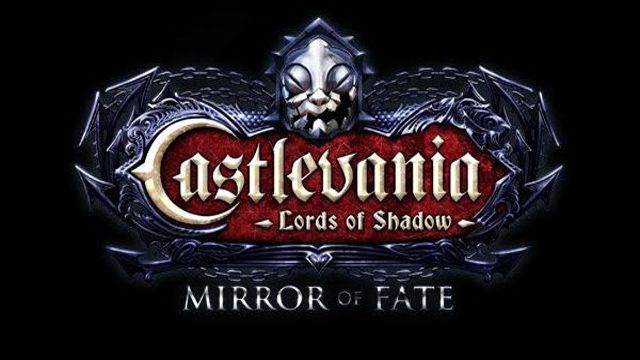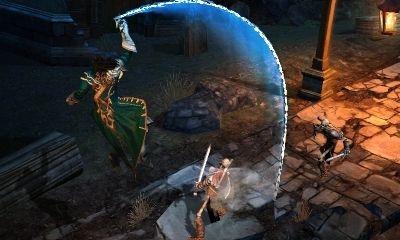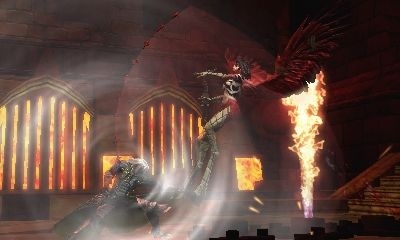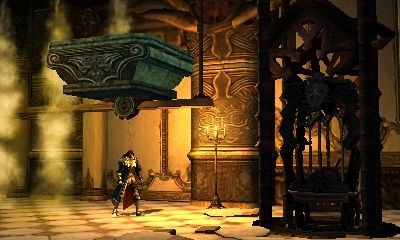Castlevania: Lords of Shadow – Mirror of Fate Review

Two and a half years ago, the Castlevania series was reborn on consoles with Lords of Shadow (LoS). It combined a retold version of the Belmont lore with God of War (GoW) and Shadow of the Colossus-style gameplay to create the best ‘Vania game on consoles in many years. In doing so, it delivered a satisfying game even if it wasn’t the most original one out there. Now, Mercury Steam has returned with something that takes that game’s cast, continues its story, and goes with a Metroidvania gameplay style instead of God of War.
Gabriel from the original is back, but has born a son with Marie named Trevor who has been surrendered to a group to raise for spoiler-riffic reasons and now Trevor’s out to figure out what happened to his deceased parents and exactly who he needs to exact revenge upon to make the wrongs right. It’s pretty much impossible to get into the storyline without spoiling it, but it’s very compelling stuff and manages to be both simple in terms of cast, and yet complex without becoming convoluted.
Gameplay-wise, going from GoW to a Metroidvania is, in theory, a jarring change given how different LoS was compared to games in the franchise’s past, but it becomes second nature really quickly. One of the biggest issues I had with LoS was that it was a bit TOO much like GoW, and at least with this setup, it’s more like some of the best entries in the ‘Vania franchise ever made. In a way, this feels like what the first game in the reboot should have been since it bridges the old with the new very well. It also makes great use of the 3DS hardware.
While a GoW clone could have been done without two sticks, as the PSP versions indicated, that would be a less than ideal way of playing a game in that style. Instead, the developers focused on making a game that would fit on the 3DS hardware and work within an existing Castlevania framework. The fact that it’s been the dominant one used over the past decade for its portable installments doesn’t hurt either. While this style debuted on a console, it’s since become the norm to play it on a handheld, so it feels like a natural way to play the first 3DS game in the franchise.
One thing that feels a bit odd is controlling your character (either Gabriel or his son Trevor) with the analog nub instead of the d-pad, but since the 3DS nub is fairly comfy, it’s no big deal and frees the D-pad up for using helpers to either help attack or defend you in case you don’t want to tap the bottom screen for them. However, trying to move with the left stick and tap the d-pad is a nearly impossible task, so it’s best to just tap the bottom screen for these things.
Other than that issue, the controls feel very organic with one exception. B jumps, A uses items, while Y and X allow for light and heavy attacks respectively. R enables a grapple with either the whip or at points on the stage with the combat cross. In an odd move, you can’t jump off of a combat cross grapple with B and can only use R, which is functional, but takes some getting used to. QTEs are included – mostly for boss battles – and the face buttons are used for those quite well, with X and Y at one point allowing you to alternate between right and left hooks to the face. They’re a bit tricky on a handheld given the small size of the prompt, but if you fail, you’re always reset right before hand – kind of like death. If it’s during a level, you’ll be respawned fairly close to where you died, and if it’s during a boss battle, you’ll resume from the last major change in the battle. Mirror of Fate is a very forgiving game when it comes to death, something I don’t mind at all since I’d rather have a game make things as frustration-free as possible.
Visually, Mirror of Fate looks remarkable. Unlike past 2D pixel-based Metroidvanias, this uses a 2.5D polygonal look for the main game that captures the overall look of LoS well while still working within the system’s limitations. During cutscenes, things get a cel shaded appearance that honestly would have been fine for the main game itself, but does help the cinematics stand out more by only using it there. The lighting effects used throughout the game are vibrant and easily the best I’ve seen on the system. They make each area you’re in seem different, which in a labyrinthian world, is quite helpful for navigation – even with an on-screen map available on the bottom screen at all times. Animation is excellent for character, environmental things like wheel-turning and door-opening, and weapon usage. Both the whip and combat cross have smooth animation, with the whip seeming quite savage based on how quickly it snaps, while the multiple purposes of the of the chain-crafted combat cross come alive as you see how large its range is when fighting, and how stable it is when swinging with it.
The Castlevania series has been heralded as having some of the industry’s best soundtrack for over two decades now, and Mirror of Fate continues that tradition. Every song you hear has you wanting to listen to it after a play session, and some of the songs are among my favorite yet for a portable entry. They’re about on par with Circle of the Moon, which may very well remain the pinnacle of portable soundtracks for the franchise, but this isn’t too far behind it. MoF has the most impressive sound effects yet for a handheld incarnation, and the best whip effects I’ve heard in a game yet. If there’s ever an Imagine S&M game (an unlikely occurrence to be sure), its developers would be wise to listen to this game and take notes on how violent the snap of the whip sound is. It’s almost disgusting, and with every lash, you can visualize flesh being torn from your enemies. The combat cross’s chain clanking is also ominous, but not quite as fear-inducing, while the creaks of rusty levers and doors get across that the castle you’re going through is far from new, and gives the in-game world a lived-in quality that I like a lot.
Castlevania: Lords of Shadow – Mirror of Fate couldn’t have many more subtitles attached to it. It also couldn’t be a much better game than it is. Outside of a couple of control issues, there isn’t a lot to not like, and I love that the developers chose to tailor-make an experience for the 3DS that was clearly made with the hardware in mind. Instead of trying to make a dumbed-down game in the vein of its console cousin, they crafted something that stands apart from it while also paying homage to many of the franchise’s best games over the past 15 years. Mirror of Fate manages to make the once well-worn Metroidvania formula new again by using this reboot-based version of the franchise, and is a must-play for any fans of the series.
Reviewed By: Jeremy Peeples
Publisher: Konami
Rating: 90%
——————————————————————————–
This review is based on a copy of Castlevania: Lords of Shadow – Mirror of Fate for the Nintendo 3DS provided by Konami.
 Game Over Online
Game Over Online

















Well written. I concur